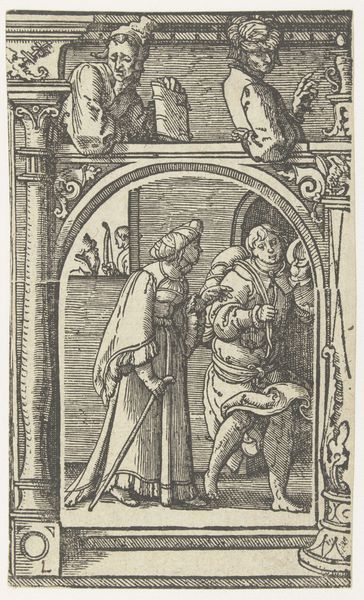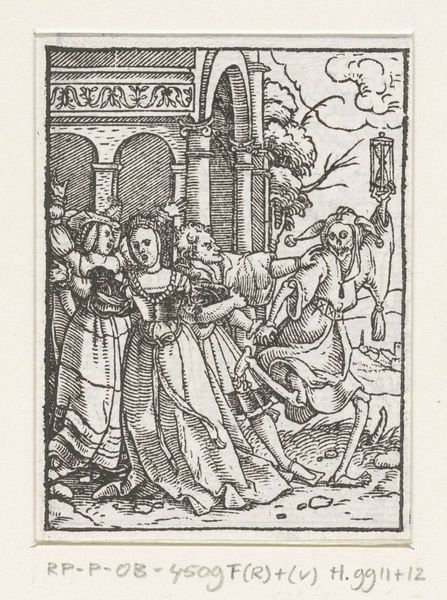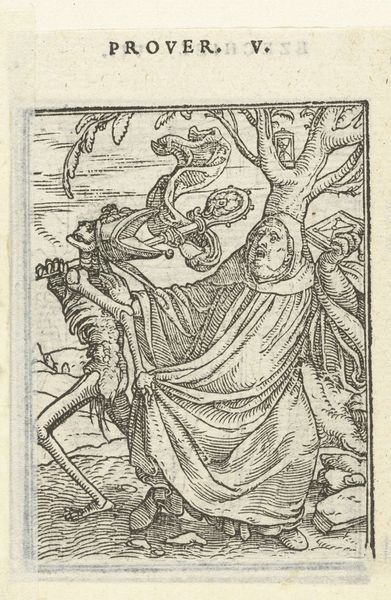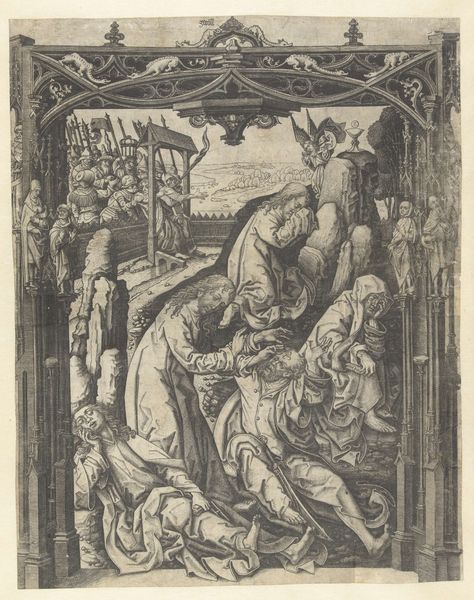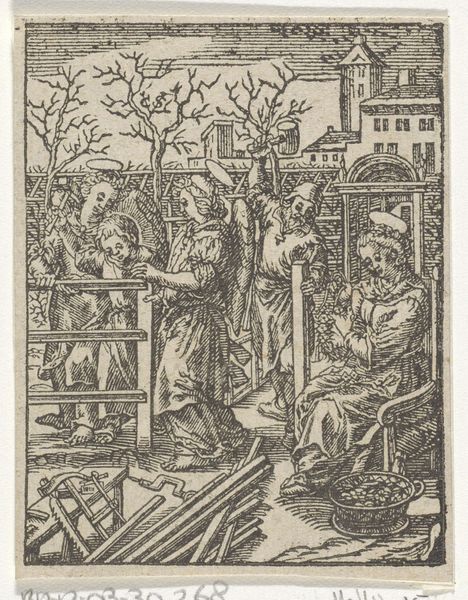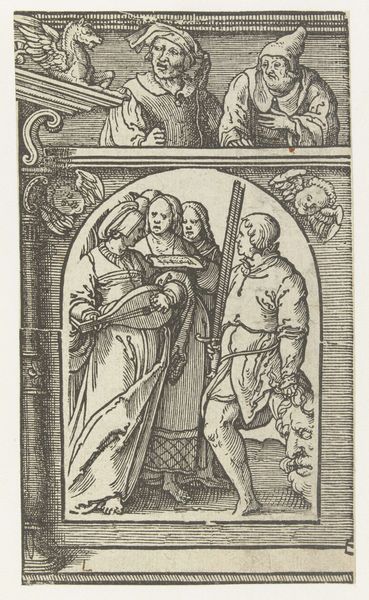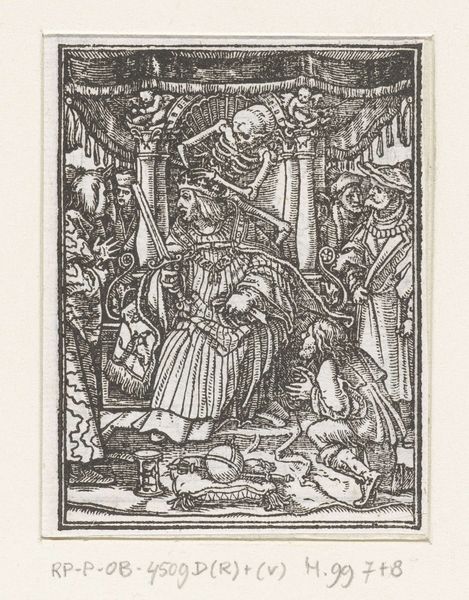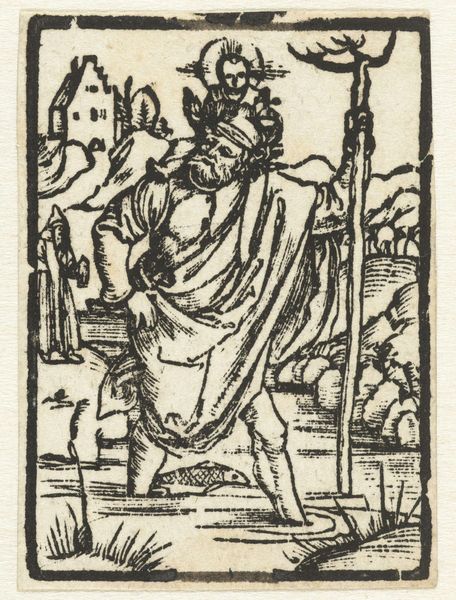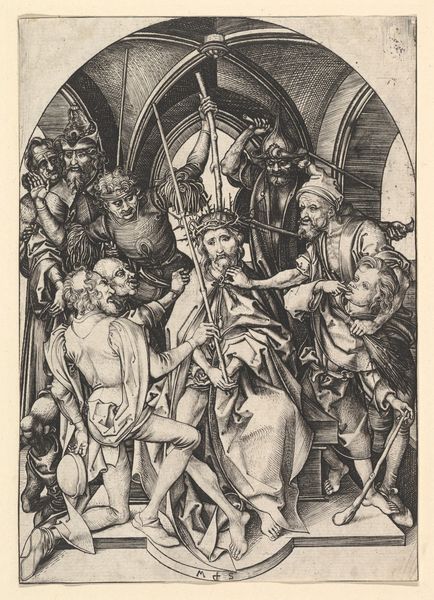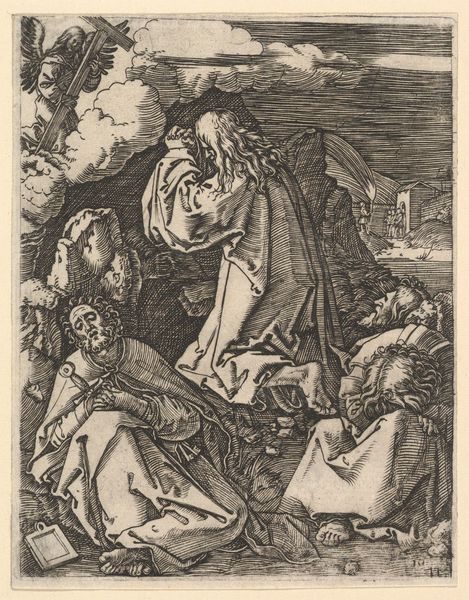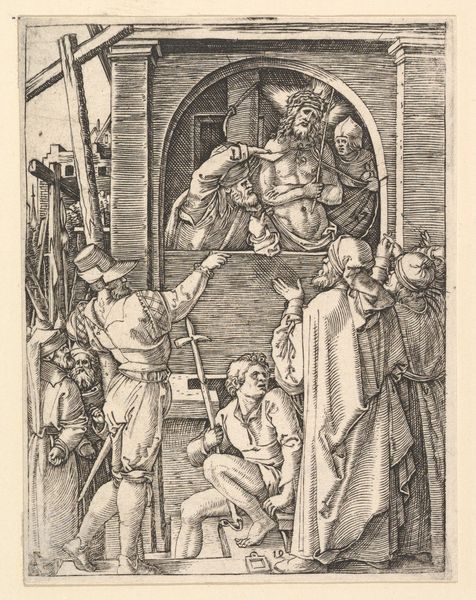
print, engraving
#
narrative-art
# print
#
figuration
#
history-painting
#
northern-renaissance
#
engraving
Dimensions: height 118 mm, width 78 mm
Copyright: Rijks Museum: Open Domain
Curator: Here we have Hans Springinklee's "Stigmatization of St. Francis of Assisi," an engraving created in 1518. It's currently held at the Rijksmuseum. What strikes you most about it? Editor: The intense contrast for such a small print is really impactful. The stark black lines against the white paper give it a dramatic, almost tormented quality, especially in St. Francis's upturned face. Curator: Springinklee was part of the circle around Albrecht Dürer in Nuremberg, and his works, including this one, are rooted in Northern Renaissance traditions. These small prints, circulated widely, played a crucial role in shaping religious perceptions. Notice the divine messenger emitting rays toward Francis. Editor: Absolutely, and placing it in a contemporary context, the piece touches upon the complexities of religious devotion. Francis's experience can be viewed through an intersectional lens – the physical suffering he endures connects to broader themes of embodiment, vulnerability, and the seeking of a higher power, very relevant to contemporary social discourse. What message did the patrons seek? Curator: This print reflects the popular fascination with the life of St. Francis, especially his receiving of the stigmata, Christ’s wounds. His compassion and imitation of Christ became ideals during a period marked by religious upheaval, hence, he became a vehicle to instill specific religious messages among the population. The adjacent, possibly grieving friar in this scene and building in the background add an interesting dimension. Editor: Definitely. And I would argue Springinklee's work doesn’t exist in a vacuum, that understanding how institutions utilize art for ideological functions is critical here. How did the church disseminate prints like this and what sort of control did they try to impose in face of evolving religious and political climate? Curator: They were easily reproducible, they became important instruments in promoting Counter-Reformation ideas. These images were easily distributed among the masses, hence influencing beliefs. Editor: Ultimately, this piece provides a look into the history of faith but also it presents critical views on belief and challenges related to vulnerability that keep the subject, to this day, close to many. Curator: Exactly. Its presence in a museum invites discussions regarding spirituality.
Comments
No comments
Be the first to comment and join the conversation on the ultimate creative platform.
